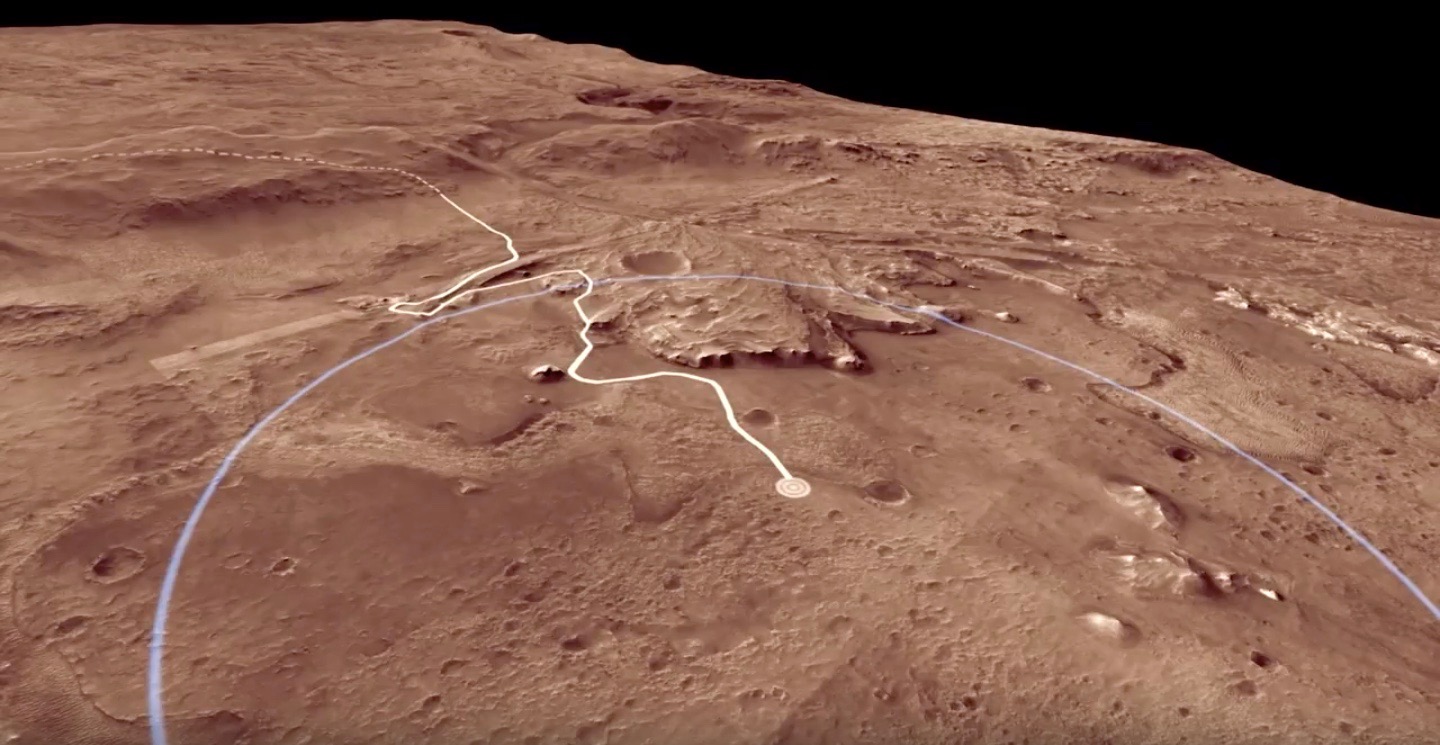Tour Jezero Crater! Fly Over the Landing Site of NASA's Next Mars Rover (Video)
A new video gives a bird's-eye view of the ancient lake bed that NASA's next Mars rover will scour for signs of long-dead life.
Last month, NASA officials announced that the 2020 Mars rover will touch down inside the 28-mile-wide (45 kilometers) Jezero Crater, which lies about 19 degrees north of the Red Planet's equator.
Jezero hosted a deep lake the size of Lake Tahoe long ago, when the Red Planet was a warmer and wetter place — which explains why the six-wheeled robot is going there. [NASA's Mars Rover 2020 Mission in Pictures (Gallery)]
"An ancient lake is a fantastic place to pursue our goal of looking for possible Martian life," Mars 2020 project scientist Ken Farley, of NASA's Jet Propulsion Laboratory, said in the flyover video, which was constructed using imagery collected by Mars orbiters and released Thursday (Dec. 13).
"On Earth, lakes are filled with living creatures. Evidence of that life is often preserved in the mud and sand deposited on the bottom of the lake," he added. "So, we'll use the rover's instruments to explore the rocks of the ancient lake bed."
The current plan calls for the car-size Mars 2020 to land near the rim of Jezero, which was blasted out by an ancient impact, Farley said. The six-wheeled robot will work its way over to a nearby delta, which preserves sediments that were delivered to the ancient lake by a river. The rover will likely then trundle over to explore the ancient lake's shoreline, navigating its way around present-day sand dunes to get there.
After that, the mission team plans to explore the rocks of Jezero's rim.
Breaking space news, the latest updates on rocket launches, skywatching events and more!
"These rocks would have been hot shortly after the impact and may have hosted hot springs," Farley said. "Deposits from these springs would be another target in our search for possible ancient life on Mars."
Mars 2020 is currently scheduled to launch in July of 2020 and touch down in February of 2021. The robot's body is based heavily on that of NASA's Curiosity rover, which has been exploring the 96-mile-wide (154 km) Gale Crater since August 2012.
Like Curiosity, Mars 2020 — which will get a more original and inspiring name before launch — will land with the aid of a rocket-powered sky crane. This device will lower the heavy rover onto Jezero's floor on cables, then fly off and crash-land intentionally a safe distance away.
(NASA's considerably lighter InSight Mars lander didn't need a sky crane to ace its touchdown last month; that craft's final landing sequence instead employed onboard descent engines.)
Mars 2020 will carry seven scientific instruments, including ground-penetrating radar, high-resolution cameras and several spectrometers. The rover will also tote both a mini-helicopter, which will serve as a scout, and a technology demonstration that will generate oxygen from the carbon-dioxide-dominated Martian air. This latter gear could help pave the way for human exploration of the Red Planet, NASA officials have said.
Mars 2020 will also cache samples for eventual return to Earth, though there is no mission currently on NASA's books to go grab this material.
Another life-hunting rover is also slated to launch toward the Red Planet in 2020: the ExoMars rover, which is a joint effort of Europe and Russia.
Mike Wall's book about the search for alien life, "Out There" (Grand Central Publishing, 2018; illustrated by Karl Tate), is out now. Follow him on Twitter @michaeldwall. Follow us @Spacedotcom or Facebook. Originally published on Space.com.

Michael Wall is a Senior Space Writer with Space.com and joined the team in 2010. He primarily covers exoplanets, spaceflight and military space, but has been known to dabble in the space art beat. His book about the search for alien life, "Out There," was published on Nov. 13, 2018. Before becoming a science writer, Michael worked as a herpetologist and wildlife biologist. He has a Ph.D. in evolutionary biology from the University of Sydney, Australia, a bachelor's degree from the University of Arizona, and a graduate certificate in science writing from the University of California, Santa Cruz. To find out what his latest project is, you can follow Michael on Twitter.

